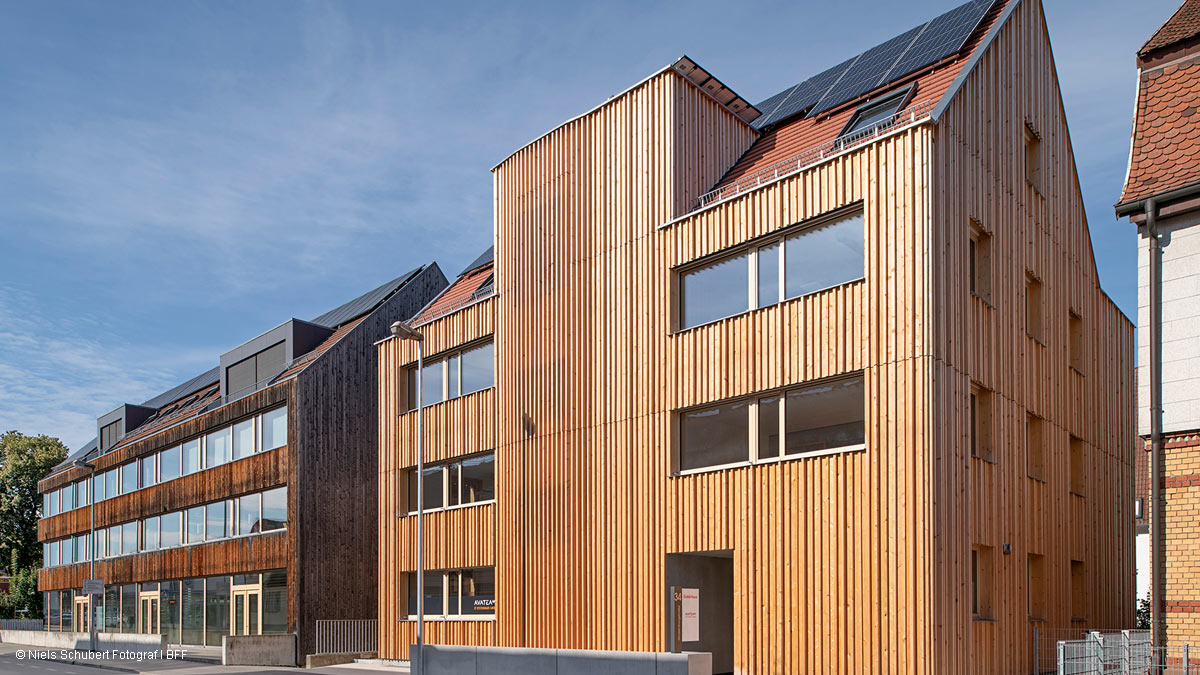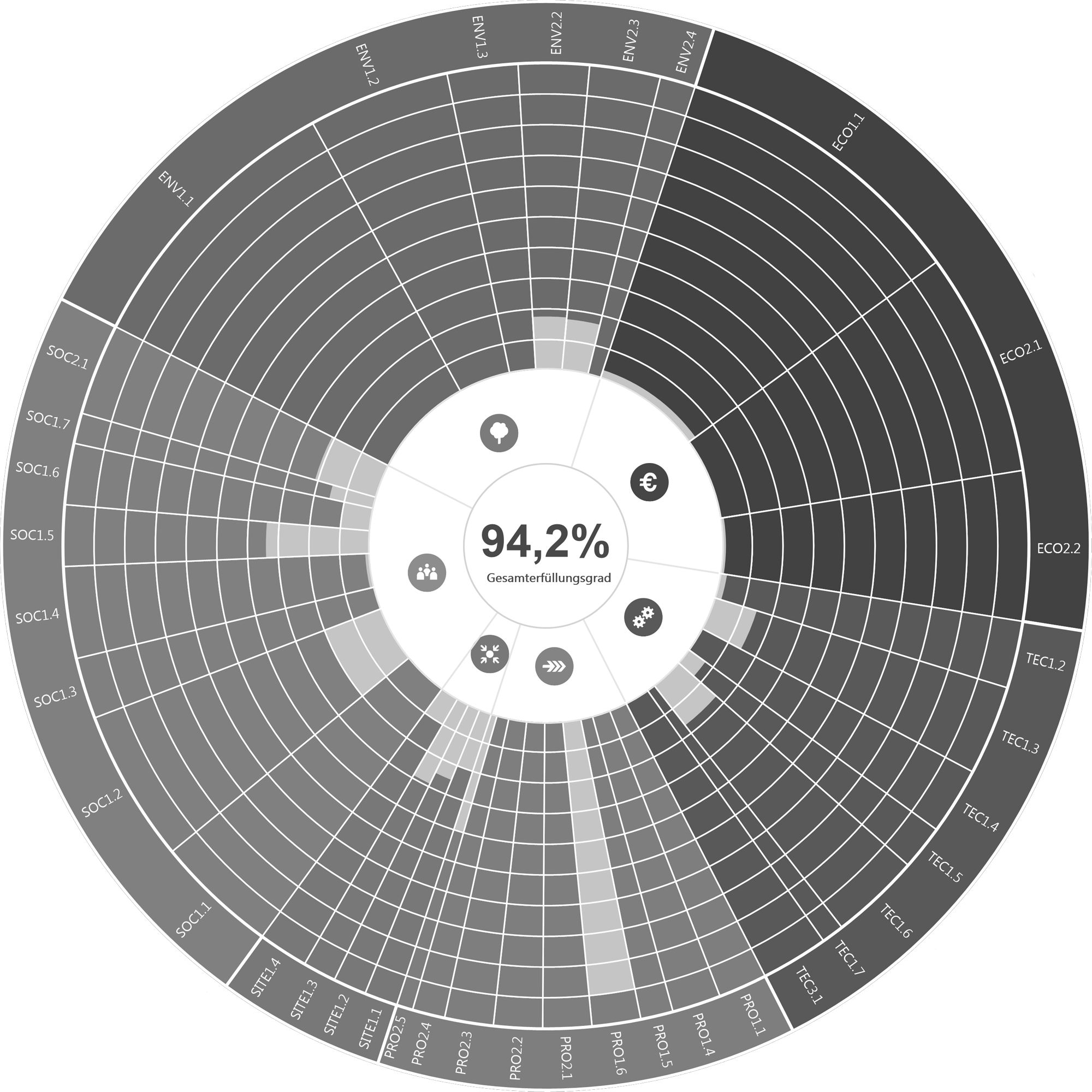Building products make buildings more flexible - because they make it easier to adapt to changing requirements. The easier it is to reuse, convert and deconstruct, the lower the effort and the risk of vacancy. Users, operators and investors benefit from this.
You can exert influence right from the start - and opt for modular components such as system partitions and element facades as well as flexible products such as detachable floor and ceiling coverings.
New Construction Eisbärhaus Bauteil C

| Award: | DGNB Certificate in Platinum |
| Usage profile: | New Construction Mixed Use, Version 2018 |
| Project location: | Kirchheim unter Teck, Germany |
| Applicant: | Grundstücksgemeinschaft Hindenburgstraße 34 GbR |
| Building owner / Investor: | Grundstücksgemeinschaft Hindenburgstraße 34 GbR |
| DGNB Auditor: | Auch-Schwelk, Volker for: sustainable strategies |
